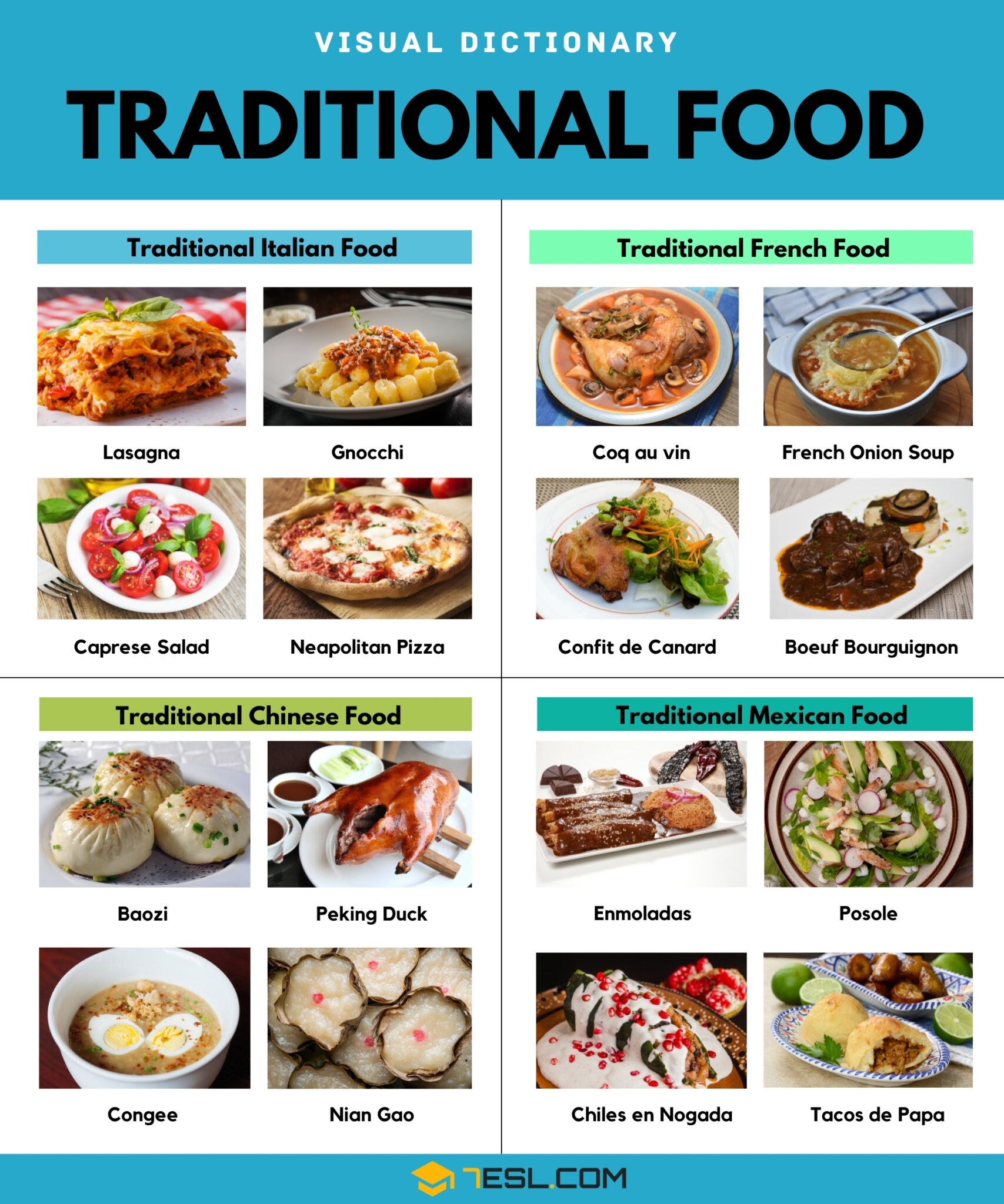 illustration from 7ESL
illustration from 7ESL
A Culinary Journey Through Time: Rediscovering Traditional Food
Traditional food is a rich tapestry of history, culture, and community. It's more than just eating; it's experiencing generations of stories passed down through unique ingredients and techniques.
What is Traditional Food?
Traditional food encompasses dishes and culinary practices that:
- Have historical significance: Prepared and enjoyed for generations, often centuries.
- Use locally sourced ingredients: Reflecting the local climate and agriculture.
- Involve specific preparation methods: Techniques like fermentation, smoking, or slow cooking are key.
- Hold cultural importance: Linked to celebrations, rituals, or community events.
Why Traditional Food Matters
Traditional food is vital for:
- Preserving cultural heritage: Connecting us to our ancestors and cultural identity.
- Supporting local economies: Promoting sustainable agriculture and local farmers.
- Promoting biodiversity: Utilizing unique plant and animal species.
- Enhancing tourism: Attracting travelers seeking authentic culinary experiences.
- Providing nutritional benefits: Offering balanced and nutrient-rich diets developed over time.
A World of Flavors: Examples of Traditional Foods
Here's a glimpse into the diverse world of traditional cuisine:
Europe
- Italy: Pasta, pizza, risotto (regional variations).
- France: Coq au vin, bouillabaisse (sophisticated techniques).
- Spain: Paella, tapas, gazpacho (diverse culinary heritage).
- Greece: Moussaka, souvlaki, spanakopita (olive oil, herbs, fresh vegetables).
Asia
- China: Dim sum, Peking duck, mapo tofu (regional flavors).
- Japan: Sushi, ramen, tempura (fresh ingredients, precise techniques).
- India: Curry, biryani, dosa (rich spice traditions).
- Thailand: Pad Thai, green curry, tom yum soup (balance of flavors).
Africa
- Ethiopia: Injera with stews and curries (unique spice blends).
- Morocco: Tagine, couscous (aromatic spices, dried fruits, nuts).
- South Africa: Biltong, boerewors, bobotie (diverse culinary influences).
The Americas
- Mexico: Tacos, enchiladas, mole (corn, beans, chili peppers).
- Peru: Ceviche, lomo saltado, quinoa dishes (diverse ingredients and techniques).
- United States: Southern BBQ, New England clam chowder, Native American frybread.
The Future of Traditional Food
Traditional food faces challenges:
- Loss of traditional knowledge: Younger generations moving away from culinary heritage.
- Competition from processed foods: Convenience displacing traditional dishes.
- Climate change: Impacting the availability of local ingredients.
- Globalization: Fast food overshadowing traditional practices.
But there's hope through:
- Documenting recipes: Preserving them for future generations.
- Supporting local producers: Farmers' markets and CSAs.
- Promoting culinary tourism: Showcasing local culture.
- Educating younger generations: Cooking classes and programs.
- Using technology: Sharing recipes online.
Bringing Traditional Food to Your Table
You don't need to travel to experience traditional food:
- Visit farmers' markets: Discover local ingredients.
- Attend cultural festivals: Taste different cuisines.
- Take a cooking class: Learn traditional techniques.
- Explore ethnic restaurants: Order traditional dishes.
- Research your family history: Recreate ancestral recipes.
- Support local artisans: Seek out traditional food producers.
- Experiment in the kitchen: Try new flavors!
The Benefits of Eating Traditional Food
Enjoy these advantages:
- Improved nutrition: Whole, unprocessed foods.
- Better digestion: Fermented foods promoting gut health.
- Increased awareness of food origins: Understanding where your food comes from.
- Support for local economies: Sustainable food systems.
- Connection to culture and history: A deeper appreciation for diversity.
Conclusion: Savoring the Flavors of History
Traditional food is a celebration of culture and a pathway to a more sustainable and flavorful future. Embrace traditional culinary practices and explore the world of flavors!
Explore local farmers' markets and ethnic restaurants. Share your favorite traditional dish in the comments below!
Published on February 15, 2025
reference: Various culinary history websites and cultural food blogs
Gema
Wordsmith and content writer passionate about creating high-quality content that informs, entertains, and inspires. Let me bring your brand's story to life.
All stories by : Gema

0 Comments